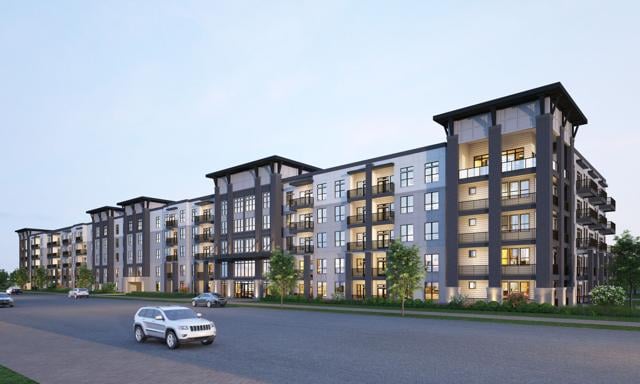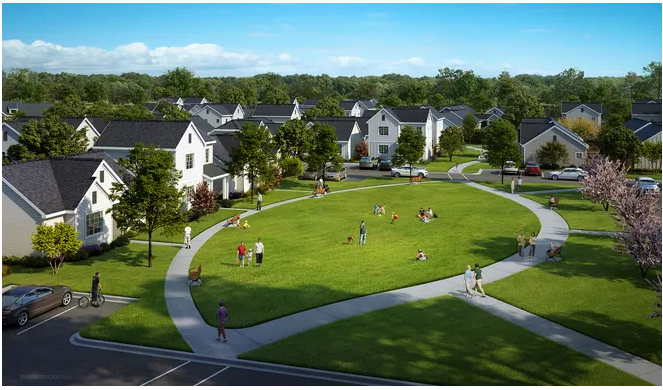There are several basic human needs that we cannot live without. Shelter is one of them. To survive the elements and reduce the risk of exposure or sickness, we must have a place to live. When you find a place to stay long-term, that space can become a home, whether it is a tiny studio apartment or a sweeping mansion.
Perhaps you are entering a new stage of life and it is time for a move to a new place. Maybe you just graduated college and are ready to start your professional journey, or your family has outgrown the apartment you have been living in. Either way, moving to a new place can be stressful.
The key to making the right choice is understanding what your needs are for a living space. Is a yard important? How many bathrooms and bedrooms are needed? What about location, specifically proximity to a workplace or community amenities? Let’s talk about the various types of living spaces you could move to.
Studio Apartment
Many young individuals have to start from the bottom. They do not have any savings yet and have to start paying back student loans in many cases, meaning they cannot commit to a big investment like a house or condo. A studio apartment is the perfect starting point for life as a young professional. Typically, these apartments are pretty small, often featuring one bedroom, one bathroom, and perhaps a separate living/dining area. Many studio apartments are located below ground level or as attachments to other types of housing units. Either way, studio apartments are one of the most affordable types of living situations.
Multi-Bedroom Apartment
The next step up is an apartment with more than one bedroom. This is a great option for the types of living space for young families, roommates, or newly married couples. The second bedroom is also perfect for a home office or storage area. Apartment complexes often include two-bedroom options, and if you are in a densely populated region, there could even be three or four-bedroom units. There is much more usable space in a multi-bedroom apartment, so there is room to grow even if you move there on your own.
Mixed-Use Development
These types of buildings are becoming more common, especially in larger cities. Part residential building, part retail property, people who move to these buildings can access more services without having to leave the complex. One example is the 300 East 50th Street luxury residence in Manhattan. Retail stores in the lower levels make it easy for upper-level residents to shop nearby for their basic needs. Mixed-used developments often feature amenities exclusively for residents as well, such as fitness centers or swimming pools. If you are seeking a higher-end experience, then a mixed-use building offers many opportunities.

Condo
Condos are halfway between apartments and houses. Each condo is usually contained within a larger complex, much like an apartment, sharing walls, ceilings, and/or floors with neighbors. However, while you rent an apartment to live in, you can own a condo. That means you can build equity with your monthly payments and profit from selling the condo after a few years of ownership. Condos sometimes include multiple stories per unit, so you have access to more space, the only downside is that you are much closer to neighbors than with a standalone house.
Single-Family Home
Speaking of standalone houses, a single-family home is one of the most sought-after types of properties and is inseparable from the concept of the American dream. To purchase a home, you will likely have to take out a mortgage and then pay it back over a certain term, such as 15, 20, or 30 years. To obtain a home, you’ll need to understand the various loan options available and which one is best for you. For example, what are the benefits of FHA vs conventional loans, and which makes more sense for your financial situation?
Tiny Home
If you crave the privacy of a home but are not yet ready for this long-term commitment, then maybe a tiny home is the way to go as an option of the types of living space for you. This rather new trend is perfect for people who do not need a ton of space and may not be sure where they want to be located. Tiny homes are often built to be moved and put down in a semi-permanent location. Living in this kind of space means maximizing space and taking advantage of energy efficiency.
What Will Be the Best Home Base For Your Lifestyle?
As you weigh the different options for your next living space, consider what its purpose will be. This place will be where you go at the end of a long day to relax. It will be your home base from which you go out into the community. It is where you will spend the most time with your family. Knowing what type of lifestyle you want can guide this big decision and help you choose the perfect living situation.

